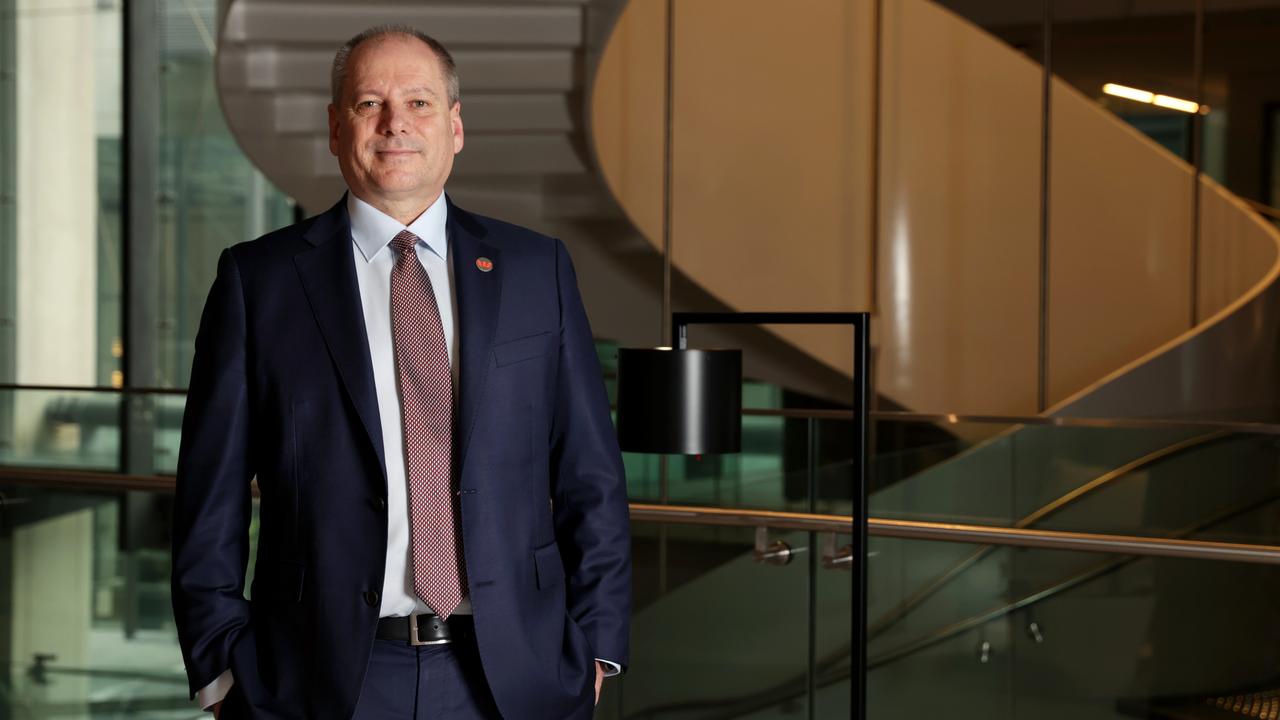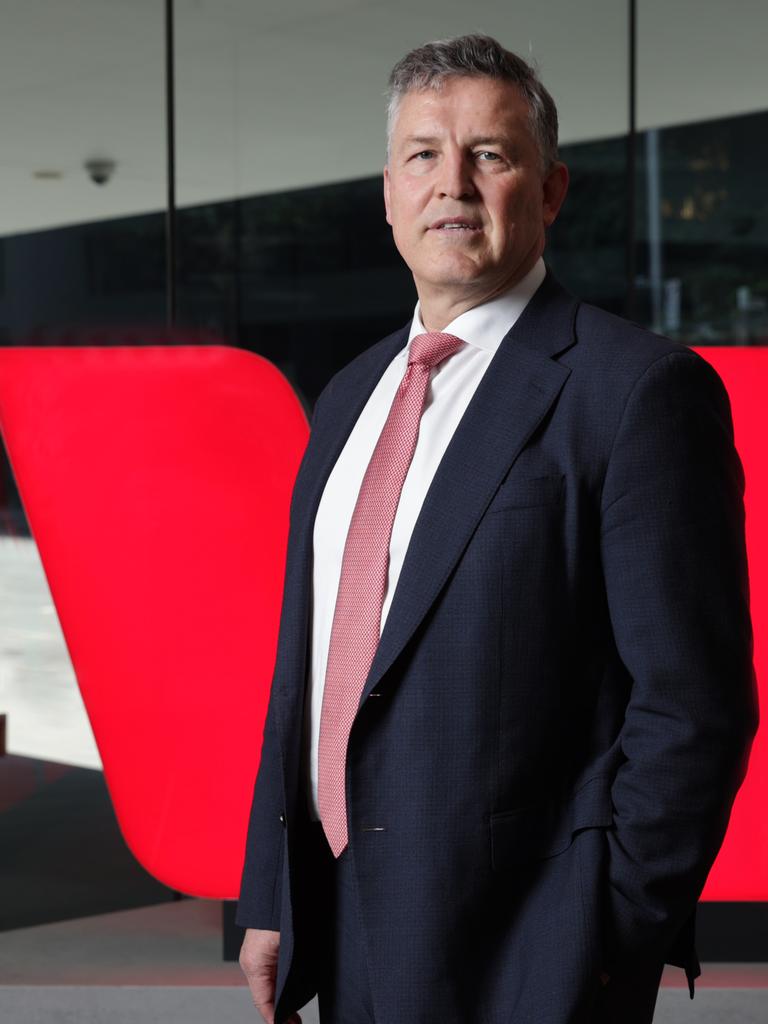The two decisions by outgoing boss Peter King that stand to shape Westpac’s future
Peter King’s time at the banking major was never going to be marked by transformational deals. Rather it involved relentless fixing of long-term problems.

Business
Don't miss out on the headlines from Business. Followed categories will be added to My News.
Peter King will drive to the northern NSW coast in coming weeks after signing-off on a three-decade banking career culminating as Westpac’s chief executive.
King hands the job over to his hand-picked successor Anthony Miller in the middle of next month, marking the second big bank this year to engineer a smooth internal CEO transition.
It is technically King’s second retirement, he had already flagged his exit as chief financial officer, but took charge as interim chief following the sudden exit of Brian Hartzer in the midst of the bank’s money laundering scandal.
Then King, under former chair John McFarlane, secured an extension to his initial two-year contract in late 2020, taking him through to five years.
It’s said that measuring the performance of a company today is like looking backwards and this means most CEOs rarely get to see the benefits of their actions.
But in Westpac’s case, the impact of two key decisions under King will have long-term implications for restoring the bank’s former glory.
The first was to use a crisis to confront some of Westpac’s deeper problems.
The Austrac explosion demanded comprehensive remedial work was undertaken. Here Westpac was directed by the bank regulator APRA to overhaul its governance and risk. But it was through this program King and his team went about trying to untangle and confront Westpac’s underperformance.
The root cause of the Austrac crisis was a bank that had suffered from lack of necessary investment and had grown too complicated, mostly through a string of acquisitions.
King slashed more than $3bn in annualised costs from the bank’s bloated expense base – an ambitious move that fell short of his own target of as much as $5bn, underscoring the scale of the challenge.
That program also involved the exit from nearly a dozen businesses including super, insurance and asset management and RAMS. He also resumed work on the St George Bank integration which even almost 15 years after the mega-merger Westpac was still running as a bank within a bank.

It was this work that led to the second major significant decision by King, which arguably holds the key to Westpac’s longer-term future. Earlier this year he signed off on a $3bn-plus multi-year technology overhaul. This is the second wave needed to make Westpac more efficient.
This program once and for all will tackle Westpac and St George’s different tech platforms and will work to slashing the amount of systems and processes to around a third of their current number. Much of these processes duplicate one another, making the bank inherently more expensive to run compared to players like Commonwealth Bank. It also raises the complexity for customers.
Even as a smaller bank, Westpac’s measure of revenue of per employee at $612,000 has remained largely flat over the past five years, even with headline profit going backwards. This shows more needs to be done in lifting productivity.
King’s tenure as CEO was never going to be marked by transformational deals; carving out exciting new markets; or a step-up in returns. Rather it involved relentless fixing of long-term problems that had been ignored and in order to give his successor a platform to grow the bank again.
The bank’s latest result reflects this.
Westpac delivered a solid, but unexciting, $7bn annual result. Interest margins started to recover on lower funding costs and while hopes of a special dividend splash were doused, with the bank offering a more cautious return of excess funds in the form of a share buyback (this can be turned on or off). In a market ready to mark down overpriced banks, investors rewarded Westpac with a 0.9 per cent share jump.
King tells The Australian the job of the CEO is to improve the franchise from where you picked it up. And he thinks he has delivered on this.
“I’m happy across that simplification, across that risk, and then customer and employee measures are making good progress as well,” he says.
“We’ve got all our resources focused on improving the bank now.”
The real difference started to be felt around 12 months ago when Westpac was no long being run as a repair project.
“That’s when I had people from outside the company, saying, Westpac is feeling different. I think that’s the employee engagement starting to resonate with customers and the community,” he says.
Westpac’s path to sustainably higher returns hinges on its ability to take costs out and continue to simplify the business. And this is now up to Miller to deliver.
Originally published as The two decisions by outgoing boss Peter King that stand to shape Westpac’s future







